The Guardian’s email newsletters

The problem
Subscribers to the Guardian’s email newsletters showed great engagement with the Guardian, but we weren’t getting many new subscribers, as our redesigned website lacked email sign-up functionality. My team was approached by stakeholders to build this functionality, however I noticed that our newsletters had much deeper problems that no one was tackling:
- The newsletters themselves were in an old, dated design and needed to be refreshed
- Many of the newsletters had automated content that hadn’t been thought about by editors for a while
- The Guardian hadn’t yet done any research to understand what makes a good email newsletter, or newsletter subscribers' needs
- All of the above made gaining new subscribers difficult - how could we sell something if we didn’t know what we were selling, or what people wanted?
- Stakeholders in the project had little understanding of UX and how it could help improve our email newsletters
The outcome
Taking a dual track approach, I pushed my team and stakeholders to look at our newsletters holistically alongside delivering email sign up. I involved them in a programme of user research, and then a collaborative redesign - tackling the usefulness of our newsletters and their content, alongside visual design.
We delivered relaunched newsletters that tested well with users and improved on open rate - as well as improved editorial tools for curating them. A workshop and toolkit I developed to help editorial desks launch newsletters was also reused around the Guardian, and we continued to iterate and improve on our newsletters.
My process
Alongside helping my team deliver a simple email sign up flow, I began planning user research to show stakeholders how UX could help solve the deeper problems with our newsletters.
I conducted interviews with Guardian email subscribers, to help us understand what really motivates someone to subscribe to a newsletter, and what makes our newsletters useful; we also conducted guerilla research to see how our newsletters would be perceived by new potential subscribers.
We used our learnings to create a new design for the Guardian’s daily email, optimised to be clear and readable, with the content that mattered most to readers.
We then ran user sessions with participants who subscribed to a variety of newsletters. We interviewed them about their newsletter habits, before testing their reaction to our new design (#3 below), as well as two existing Guardian designs. I ensured the team and editorial stakeholders watched all of the sessions.
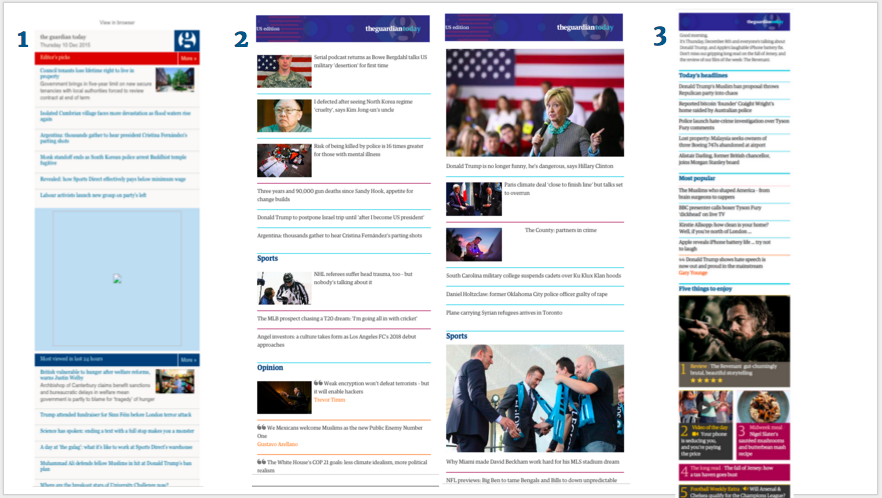
Following the sessions I put together a definitive deck on users’ email reading habits and needs, along with principles to guide newsletter design and content at the Guardian in future.
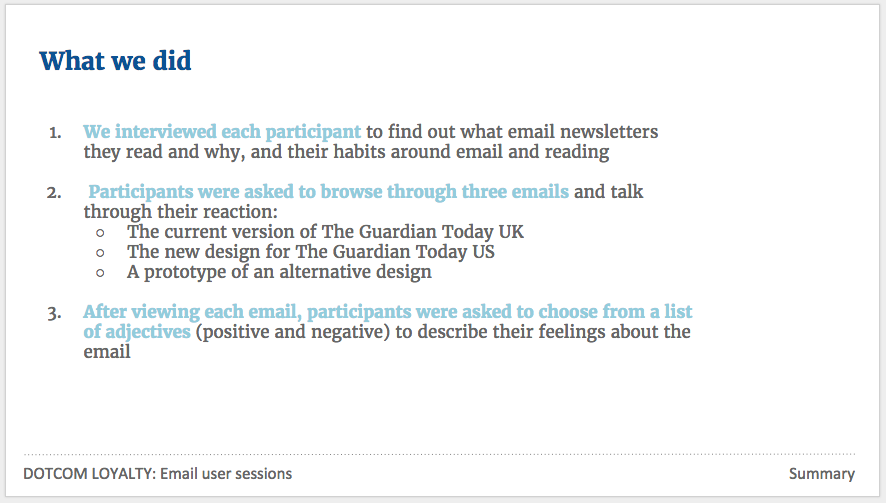
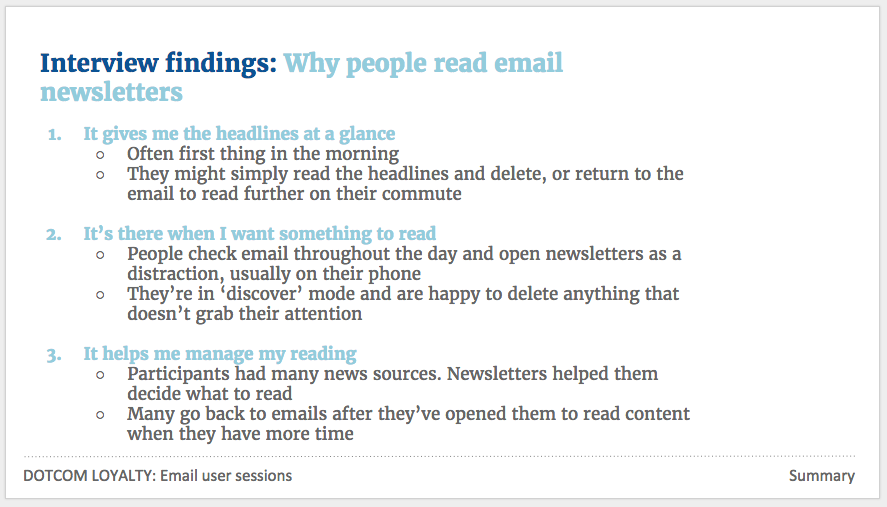

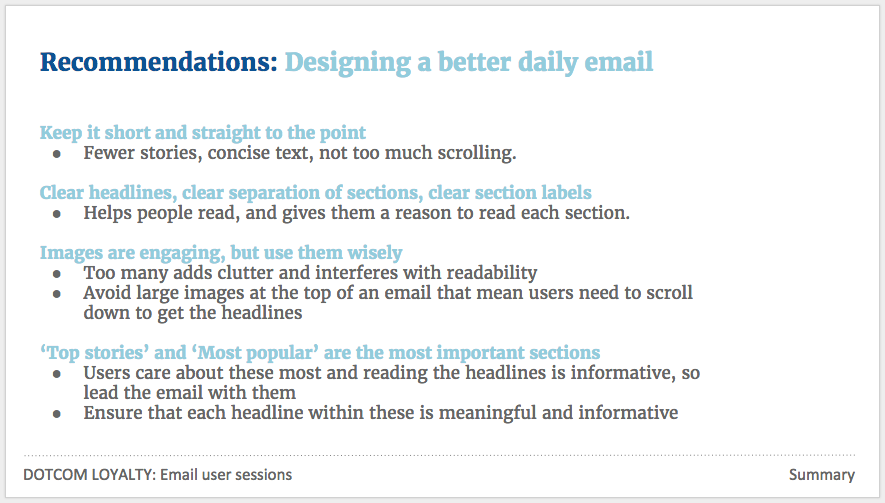
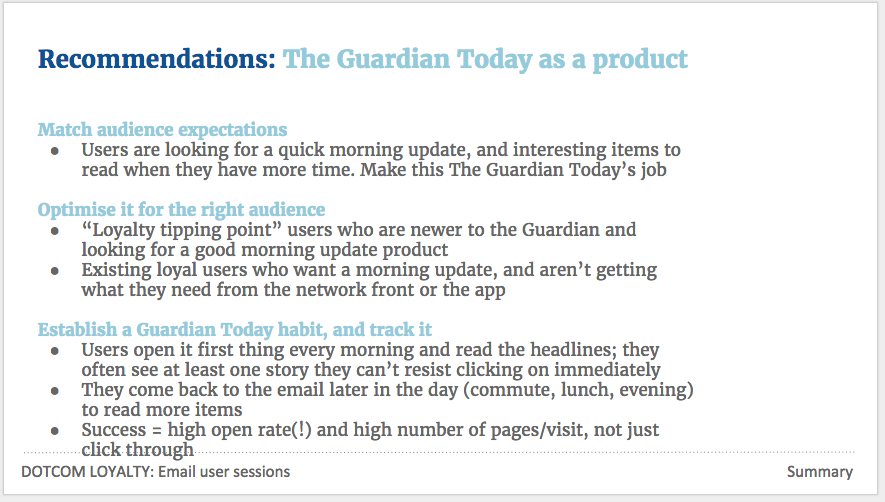

The lab sessions and research findings were a transformative experience for editorial stakeholders when it came to understanding the value of UX, and I was able to start working closely with editorial on further design and research to improve our newsletters holistically - going way beyond the initial sign up flow brief.
This included:
- An audit of existing newsletters and their content, looking for patterns to help us create new re-usable newsletter templates that fit users’ needs around different types of reading
- Workshops for editors looking to launch a newsletter or revamp an existing one. The workshops were designed to help editors think about their newsletter’s audience and motivations for signing up, and create a newsletter wireframe that packages up the most relevant content for that audience in the most user-friendly way
- Work on re-branding our newsletters to help them better appeal to new subscribers, with messaging based on motivations for signing up
- Understanding editor’s needs to help us create a tool that allows them to curate newsletter content
- Further design iterations and user testing of our new newsletter templates and refreshed content, in the lab and remotely with a panel of newsletter readers that I recruited and maintained
- Working with editorial to design, test and pilot new flagship newsletters like Morning Briefing and Weekend Reading
- Relaunching dated emails like The Flyer to great success - The Flyer achieved 28% growth in active subscribers in its first month.
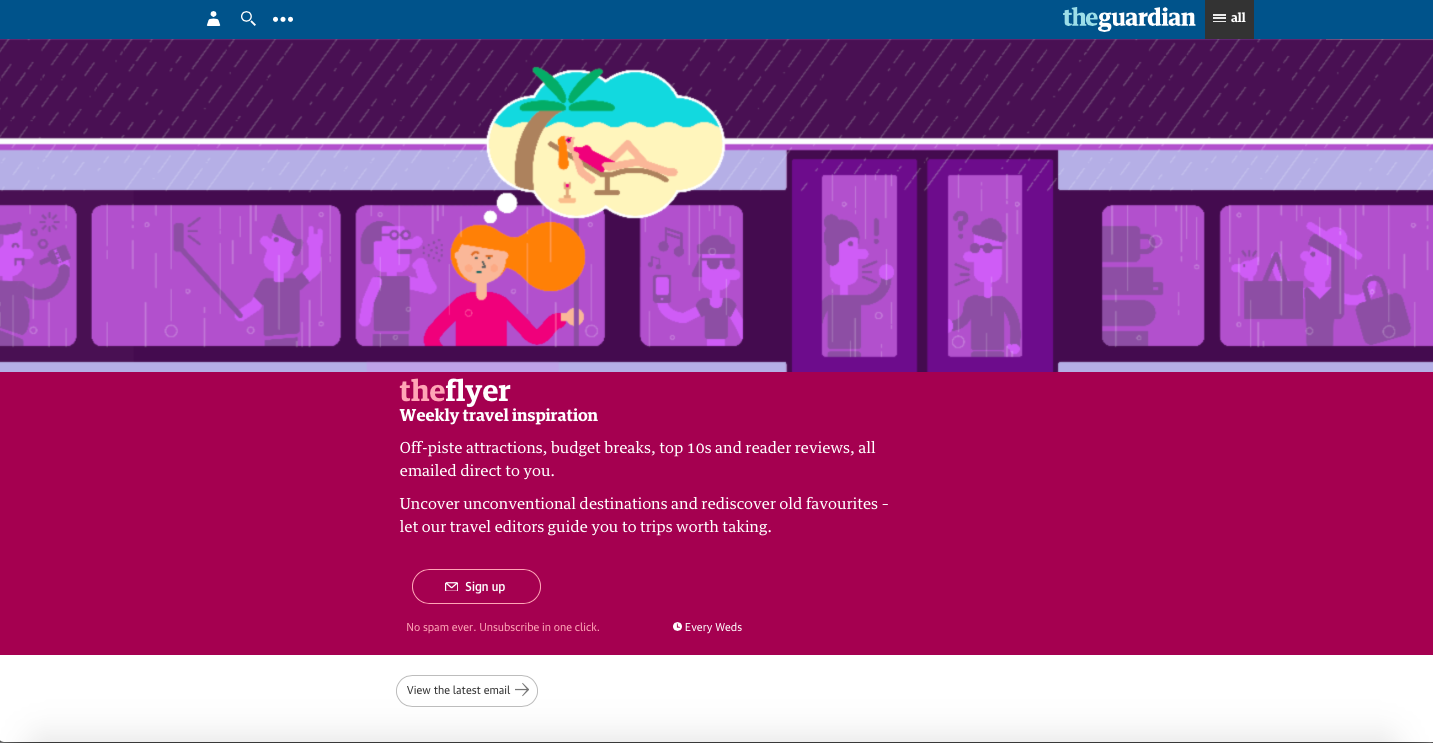
Case studies
Case studies